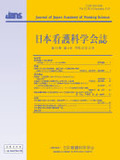Japanese
English
- 販売していません
- Abstract 文献概要
- 参考文献 Reference
- サイト内被引用 Cited by
要旨
目的:冷え症の妊婦と,そうではない妊婦での,微弱陣痛および遷延分娩の発生率の相違の分析および,因果効果の推定を行うことである.
方法:研究デザインは後向きコホート研究である.調査期間は2009年10月19日〜2010年10月8日までの12ヵ月であり,病院に入院中の分娩後の女性2,540名を分析の対象とした(回収率60.8%).調査方法は,質問紙調査と医療記録からのデータ抽出である.分析では,共分散分析と層別解析にて傾向スコアを用いて交絡因子の調整を行った.
結果:冷え症であった女性は41.9%であった.微弱陣痛では,冷え症の回帰係数0.69,p<0.001,オッズ比2.00であった(共分散分析).遷延分娩では,冷え症の回帰係数0.83,p<0.001,オッズ比2.38であった(共分散分析).
結論:微弱陣痛では,冷え症である妊婦の微弱陣痛発生率の割合は,冷え症ではない妊婦に比べ,2倍であり,遷延分娩では約2.3倍であった.因果効果の推定では,冷え症と微弱陣痛ならびに遷延分娩の間で因果効果の可能性があることが推定された.
Abstract
Purpose:The purpose of this study is to analyze the difference in incidence of uterine inertia and prolonged labor between pregnant women with hiesho and those without hiesho and to estimate the causal effects.
Method:The study design was a retrospective cohort study. The analysis was conducted on 2,540 women in hospital after delivery, over the approximately twelve months between October 19, 2009 and October 8, 2010 (response rate:60.8%). The research methods employed were a self-administered questionnaire and data extraction from medical records. In this analysis, confounding factors were adjusted by carrying out analysis of covariance and stratified analysis using propensity scores.
Results:Of study respondents, 41.9 percent had hiesho. The regression coefficient of hiesho was 0.69, p<0.001 and the odds ratio was 2.00 for uterine inertia (analysis of covariance). The regression coefficient of hiesho was 0.83, p<0.001 and the odds ratio was 2.38 for prolonged labor (analysis of covariance).
Conclusion:The incidence of uterine inertia was twice as high among pregnant women with hiesho than those without hiesho, and the incidence of prolonged labor was 2.3 times higher. It was inferred that hiesho may have causal effects on uterine inertia and prolonged labor.
Copyright © 2013, Japan Academy of Nursing Science. All rights reserved.


